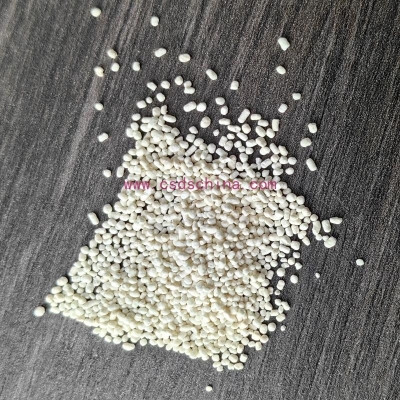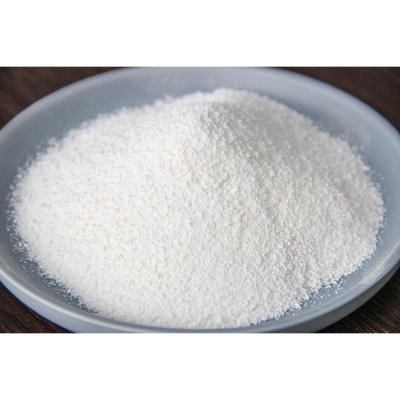-
Categories
-
Pharmaceutical Intermediates
-
Active Pharmaceutical Ingredients
-
Food Additives
- Industrial Coatings
- Agrochemicals
- Dyes and Pigments
- Surfactant
- Flavors and Fragrances
- Chemical Reagents
- Catalyst and Auxiliary
- Natural Products
- Inorganic Chemistry
-
Organic Chemistry
-
Biochemical Engineering
- Analytical Chemistry
-
Cosmetic Ingredient
- Water Treatment Chemical
-
Pharmaceutical Intermediates
Promotion
ECHEMI Mall
Wholesale
Weekly Price
Exhibition
News
-
Trade Service
png" target="_blank">
png" target="_blank">Recently, Professor Tang Hongzhi and Professor Zhao Yilei from the School of Life Science and Technology of Shanghai Jiaotong University and the Microbial Catabolism Team of the State Key Laboratory of Microbial Metabolism have jointly published an online publication entitled "Structure-guided insights into heterocyclic ring-" in the international authoritative journal "Nature Communications".
The cleavage catalysis of the non-heme Fe (II) dioxygenase NicX" research paper reveals the catalytic reaction mechanism of the non-heme Fe (II) dioxygenase NicX.
The cleavage catalysis of the non-heme Fe (II) dioxygenase NicX" research paper reveals the catalytic reaction mechanism of the non-heme Fe (II) dioxygenase NicX.
2,5-Hydroxypyridine (DHP) is a metabolic bioon.
com/tags/%E4%B8%AD%E9%97%B4%E4%BD%93/" target="_blank">intermediate in the catabolism of many pyridine derivatives , which can cause DNA strand breaks and is a potential carcinogen, which can be catalyzed by dioxygenase (NicX) to open the ring It is N-formyl maleic acid (NFM).
The enzymes that catalyze the benzene ring-opening reaction have been deeply studied in terms of structure and mechanism.
However, there are few reports on the enzymes that catalyze the pyridine ring-opening reaction and the catalytic reaction mechanism.
com/tags/%E4%B8%AD%E9%97%B4%E4%BD%93/" target="_blank">intermediate in the catabolism of many pyridine derivatives , which can cause DNA strand breaks and is a potential carcinogen, which can be catalyzed by dioxygenase (NicX) to open the ring It is N-formyl maleic acid (NFM).
The enzymes that catalyze the benzene ring-opening reaction have been deeply studied in terms of structure and mechanism.
However, there are few reports on the enzymes that catalyze the pyridine ring-opening reaction and the catalytic reaction mechanism.
This study analyzed the structure of the NicX monomer and the complex structure of NicX with the small molecule substrate DHP and the product NFM.
The crystal structure shows that NicX uses His265, Ser302, His318 and Asp320 to coordinate metal ferrous ions, and the non-heme ferrous dioxygenase structural protein with Ser as the ferrous ion ligand is also the first report.
If these four Mutations in residues will make the enzyme lose its ability to bind ferrous metal ions.
Comparing the structure of the enzyme-binding substrate and the enzyme-binding product in the resting state, it is found that the amino acid residue Leu104-His105 plays a role in binding and stabilizing the substrate during the catalytic reaction process, and the conformational change will close the channel II , And open a hydrophobic channel to the active center at the same time.
Further combined with QM/MM calculation and analysis, the catalytic mechanism of oxygen binding to the top position is proposed: oxygen is bound between the substrate and ferrous ion, and the NH on the pyridine ring of the substrate participates in proton transfer to activate oxygen molecules, prompting oxygen to attack the substrate.
Then, the OO bond is broken and one of the oxygen atoms is inserted into the pyridine ring to form a seven-membered ring bioon.
com/tags/%E4%B8%AD%E9%97%B4%E4%BD%93/" target="_blank">intermediate , and the subsequent seven-membered ring is opened to generate the product.
(bioon.
com" target="_blank">Bioon.
com)
The crystal structure shows that NicX uses His265, Ser302, His318 and Asp320 to coordinate metal ferrous ions, and the non-heme ferrous dioxygenase structural protein with Ser as the ferrous ion ligand is also the first report.
If these four Mutations in residues will make the enzyme lose its ability to bind ferrous metal ions.
Comparing the structure of the enzyme-binding substrate and the enzyme-binding product in the resting state, it is found that the amino acid residue Leu104-His105 plays a role in binding and stabilizing the substrate during the catalytic reaction process, and the conformational change will close the channel II , And open a hydrophobic channel to the active center at the same time.
Further combined with QM/MM calculation and analysis, the catalytic mechanism of oxygen binding to the top position is proposed: oxygen is bound between the substrate and ferrous ion, and the NH on the pyridine ring of the substrate participates in proton transfer to activate oxygen molecules, prompting oxygen to attack the substrate.
Then, the OO bond is broken and one of the oxygen atoms is inserted into the pyridine ring to form a seven-membered ring bioon.
com/tags/%E4%B8%AD%E9%97%B4%E4%BD%93/" target="_blank">intermediate , and the subsequent seven-membered ring is opened to generate the product.
(bioon.
com" target="_blank">Bioon.
com)
Recently, Professor Tang Hongzhi and Professor Zhao Yilei from the School of Life Science and Technology of Shanghai Jiaotong University and the Microbial Catabolism Team of the State Key Laboratory of Microbial Metabolism have jointly published an online publication entitled "Structure-guided insights into heterocyclic ring-" in the international authoritative journal "Nature Communications".
The cleavage catalysis of the non-heme Fe (II) dioxygenase NicX" research paper reveals the catalytic reaction mechanism of the non-heme Fe (II) dioxygenase NicX.
The cleavage catalysis of the non-heme Fe (II) dioxygenase NicX" research paper reveals the catalytic reaction mechanism of the non-heme Fe (II) dioxygenase NicX.
2,5-Hydroxypyridine (DHP) is a metabolic bioon.
com/tags/%E4%B8%AD%E9%97%B4%E4%BD%93/" target="_blank">intermediate in the catabolism of many pyridine derivatives , which can cause DNA strand breaks and is a potential carcinogen, which can be catalyzed by dioxygenase (NicX) to open the ring It is N-formyl maleic acid (NFM).
The enzymes that catalyze the benzene ring-opening reaction have been deeply studied in terms of structure and mechanism.
However, there are few reports on the enzymes that catalyze the pyridine ring-opening reaction and the catalytic reaction mechanism.
bioon. com/tags/%E4%B8%AD%E9%97%B4%E4%BD%93/" target="_blank">intermediate in the catabolism of many pyridine derivatives , which can cause DNA strand breaks and is a potential carcinogen, which can be catalyzed by dioxygenase (NicX) to open the ring It is N-formyl maleic acid (NFM).
The enzymes that catalyze the benzene ring-opening reaction have been deeply studied in terms of structure and mechanism.
However, there are few reports on the enzymes that catalyze the pyridine ring-opening reaction and the catalytic reaction mechanism.
com/tags/%E4%B8%AD%E9%97%B4%E4%BD%93/" target="_blank">Intermediate
This study analyzed the structure of the NicX monomer and the complex structure of NicX with the small molecule substrate DHP and the product NFM.
The crystal structure shows that NicX uses His265, Ser302, His318 and Asp320 to coordinate metal ferrous ions, and the non-heme ferrous dioxygenase structural protein with Ser as the ferrous ion ligand is also the first report.
If these four Mutations in residues will make the enzyme lose its ability to bind ferrous metal ions.
Comparing the structure of the enzyme-binding substrate and the enzyme-binding product in the resting state, it is found that the amino acid residue Leu104-His105 plays a role in binding and stabilizing the substrate during the catalytic reaction process, and the conformational change will close the channel II , And open a hydrophobic channel to the active center at the same time.
Further combined with QM/MM calculation and analysis, the catalytic mechanism of oxygen binding to the top position is proposed: oxygen is bound between the substrate and ferrous ion, and the NH on the pyridine ring of the substrate participates in proton transfer to activate oxygen molecules, prompting oxygen to attack the substrate.
Then, the OO bond is broken and one of the oxygen atoms is inserted into the pyridine ring to form a seven-membered ring bioon.
com/tags/%E4%B8%AD%E9%97%B4%E4%BD%93/" target="_blank">intermediate , and the subsequent seven-membered ring is opened to generate the product.
(bioon.
com" target="_blank">Bioon.
com)
bioon. The crystal structure shows that NicX uses His265, Ser302, His318 and Asp320 to coordinate metal ferrous ions, and the non-heme ferrous dioxygenase structural protein with Ser as the ferrous ion ligand is also the first report.
If these four Mutations in residues will make the enzyme lose its ability to bind ferrous metal ions.
Comparing the structure of the enzyme-binding substrate and the enzyme-binding product in the resting state, it is found that the amino acid residue Leu104-His105 plays a role in binding and stabilizing the substrate during the catalytic reaction process, and the conformational change will close the channel II , And open a hydrophobic channel to the active center at the same time.
Further combined with QM/MM calculation and analysis, the catalytic mechanism of oxygen binding to the top position is proposed: oxygen is bound between the substrate and ferrous ion, and the NH on the pyridine ring of the substrate participates in proton transfer to activate oxygen molecules, prompting oxygen to attack the substrate.
Then, the OO bond is broken and one of the oxygen atoms is inserted into the pyridine ring to form a seven-membered ring bioon.
com/tags/%E4%B8%AD%E9%97%B4%E4%BD%93/" target="_blank">intermediate , and the subsequent seven-membered ring is opened to generate the product.
(bioon.
com" target="_blank">Bioon.
com)
com/tags/%E4%B8%AD%E9%97%B4%E4%BD%93/" target="_blank">Intermediatebioon.
com" target="_blank">







